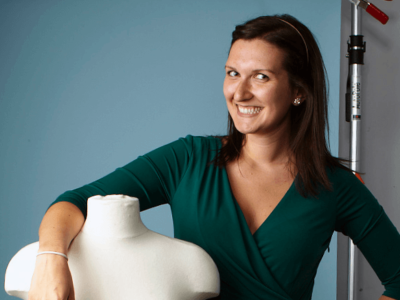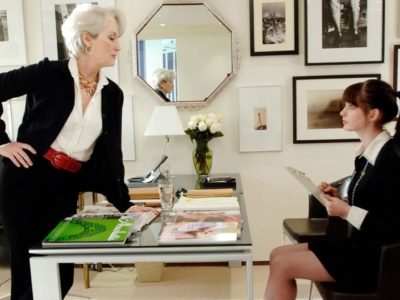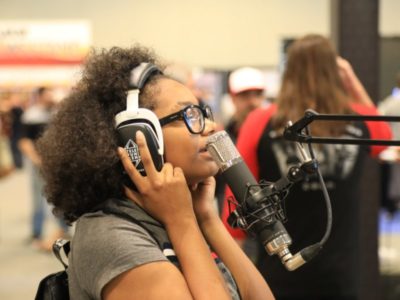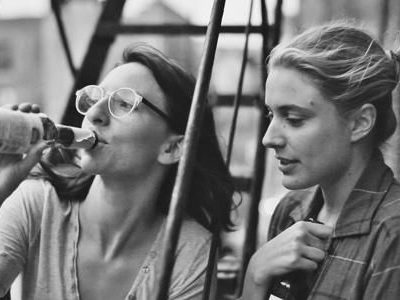When Anna Marina Karadimas was a sophomore at the University of Maryland, College Park, she was faced with a major decision. She had two options: Economics (which wasn’t working out) or Studio Art (which she loved). She’d been interested in photography, her concentration within the SA major, since High School. Journalism, too, had been an interest. So she decided, rather bravely I might add and somewhat insanely as many English/Journalism major’s parents predictably add, to drop Econ, and to pursue what she loved. An opportunity arrived quickly. College Magazine was looking for a photo editor.
This was 2007, and CM was new, basically still a freshman, so to speak. There was an office in College Park where writers, editors gathered in person. CM had a print edition featuring all the content we’ve come to associate with the mag…except you could actually hold it. Like, with your hands. There were spreads, cover photos, page formatting, and Anna ran the aesthetics of the show. She produced the first celebrity cover shoot of Kate Voegele, and she wrote the accompanying story. She stayed with CM until 2009. If there were a CM Hall-of-Fame, she’d be in it.
With only CM on her resume, she applied and got an internship for the Hearst Corporation, the publishing behemoth of Citizen Kane fame. As is the case in all foot-as-door-jam internships, there was some luck involved – Anna’s resume reminded its reviewer of the time she had visited friends in College Park and had a great time at The Voo, a local bar now called Cornerstone. Though it was, in Anna’s words, a “pretty entry-level internship,” the following summer she would go on to intern a Seventeen magazine, also a Hearst publication, where she found big success. In fact, her boss at Seventeen liked her so much, she not only offered Anna the job before she had graduated, but freelanced the position out until that time, both of which are completely unheard of in Editorial. Ten days after finishing school, Anna moved to New York. Two years later – today – she is the assistant photo editor of Redbook magazine.

It’s an impressive story, and she’s an impressive person, but make no mistake – real-life work is not cushy or easy. Anna calls her days at that first Hearst job “cloud nine,” and “the time of her life.” And for a nineteen year-old looking to jam some company’s door stop by absolutely killing the tasks a door jam could do, living in an NYU dorm, working a flexible 10-6 schedule and spending full nights with friends is indeed, living the life, though a type of life particular to a moment.
She describes the transition to “real” life like this: “At the time my parents were supporting me…now I’m basically poor, can’t go to work hungover…I wake up in the morning, go to work, come back, eat, and go to bed.” She has restrictions because, “Brand comes first, the editor-in-chief comes first, Hearst comes first.” No longer is she an inanimate placeholder – she has real responsibilities whose fulfillment really impacts a product thousands of livelihoods depend on. There are restrictions on the type of content she can create and the type of people she can hire because she is a representative of a company ideology. The rigors of her promise to Hearst naturally are consuming.
In college, she ran her own photo blog, but now when she returns from work, a day replete with computer screens, the thought of opening her laptop is repulsive. “I want to be outside in New York, I want to see my friends, I want to catch up on TV,” she says wistfully. She doesn’t have the creative license a full-time artist or blogger might have – she cannot – but she is working in photography, which she loves. This is what she calls “Balancing happiness.”
Which isn’t to say “adult life” is no fun, and definitely isn’t to say that experience before “adult life” is frivolous and irrelevant. What Anna did at College Magazine is almost exactly what she does currently. Anna must find and contact photographers, collaborate with Editorial and Publishing teams on pieces, choose which photos out of hundreds to include, or not (the number of factors involved in making decisions like this is so gargantuan, half are considered semi-consciously) and, though CM allows for a lot of creative freedom, bless our publisher’s heart, she must do that all with a specific company voice, tone, audience, style in mind all the time. Her time here prepared her extremely well for her career, without question. Jobs that match your skill-set perfectly are hard to find, but they’re invaluable and well-worth your efforts.
I’ll leave it at this. Although there are many other reasons Anna is where she is now, that is, on the up-and-up, one reason sticks out to me (and her) as especially causal: Her kindness to others. This is no joke. When I asked her about some of her strategies for success, she said, “It’s 110% percent about net—,” stopped herself, then said, “No, no, I’m not going to give you a long, convoluted answer,” because using a network is harder than just having a network. It requires maintaining the network consistently. Anna, “is nice to everybody, nice to interns, because you never who is going to be hiring, who is going to pass you a whisper of a job.” There is nothing worse for her than a person who she hasn’t spoken with in a year coming to her and asking her about a job. Employment still boils down to personal interaction, and Anna has been proactive and thoughtful in how she interacts with others. I think the efficacy of this strategy speaks for itself through her and her particular journey from her days at College Magazine to where she is today.



















